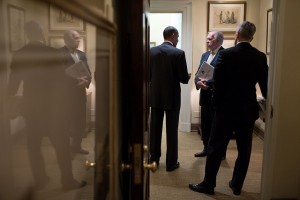Vindictive John Brennan Should Be Fired Before He Strikes Again
Since the release of the summary of the Senate Select Committee on Intelligence report on torture, I don’t think we’ve seen a return of the fawning press pieces over John Brennan where we see reverent mention of his moral rectitude. That’s a good thing, since the hummus incident in the report would suggest that those he leads at the CIA display something more like moral rectaltude. Sadly, though, it seems that outgoing Senator Mark Udall of Colorado is the lone voice in the wilderness calling for Brennan to be fired. Here he is on Wednesday, in the Senate, disclosing more information from the Panetta review on torture and calling for Brennan to be fired over his continued lies to Congress and the American people (at 3:09 of the video, “In other words, the CIA is lying.”):
As Udall notes, Brennan has continued to cover for CIA lies and misrepresentations to Congressional overseers. He also has mostly claimed that CIA torture saved lives, although yesterday he did engage in some semantics over that point, presumably in response to Udall’s Wednesday speech.
But besides Udall’s point about Brennan needing to be fired over his failure to clean house over torture or even to fully recognize it, there is another, stronger, reason to call for Brennan’s removal. Brennan has demonstrated, multiple times, that he will allow political vindictiveness to drive his actions. And he has done so in the worst possible way: in his previous counterterrorism role and then at CIA in his control of drone strikes. As I have noted in this post and this one, drone strikes in which Brennan would have played a controlling role can be seen as being driven by political retaliation rather than security.
A man who has used drone strikes as political retaliation tools has no business running a CIA that is once again under siege for its crimes. Even though few in the US are calling for prosecutions, calls for prosecutions have now come from more than one UN figure.
Also, don’t forget another event that will factor into Brennan’s anger over calls for prosecutions and/or his removal: he undoubtedly feels that the anti-torture crowd caused him to have to wait to take his rightful role as head of CIA. Recall that he withdrew his name for consideration in 2008 due to his association with the torture program and has been director now for less than two years.
How can Barack Obama leave in office a man who has used lethal drone strikes in the past to score political points to remain in office when the organization he leads is under siege for its demonstrated breaches of international law? Brennan makes the case for his removal even more urgent when he says that a return to torture is simply a question for future policymakers rather than something that is clearly illegal.

